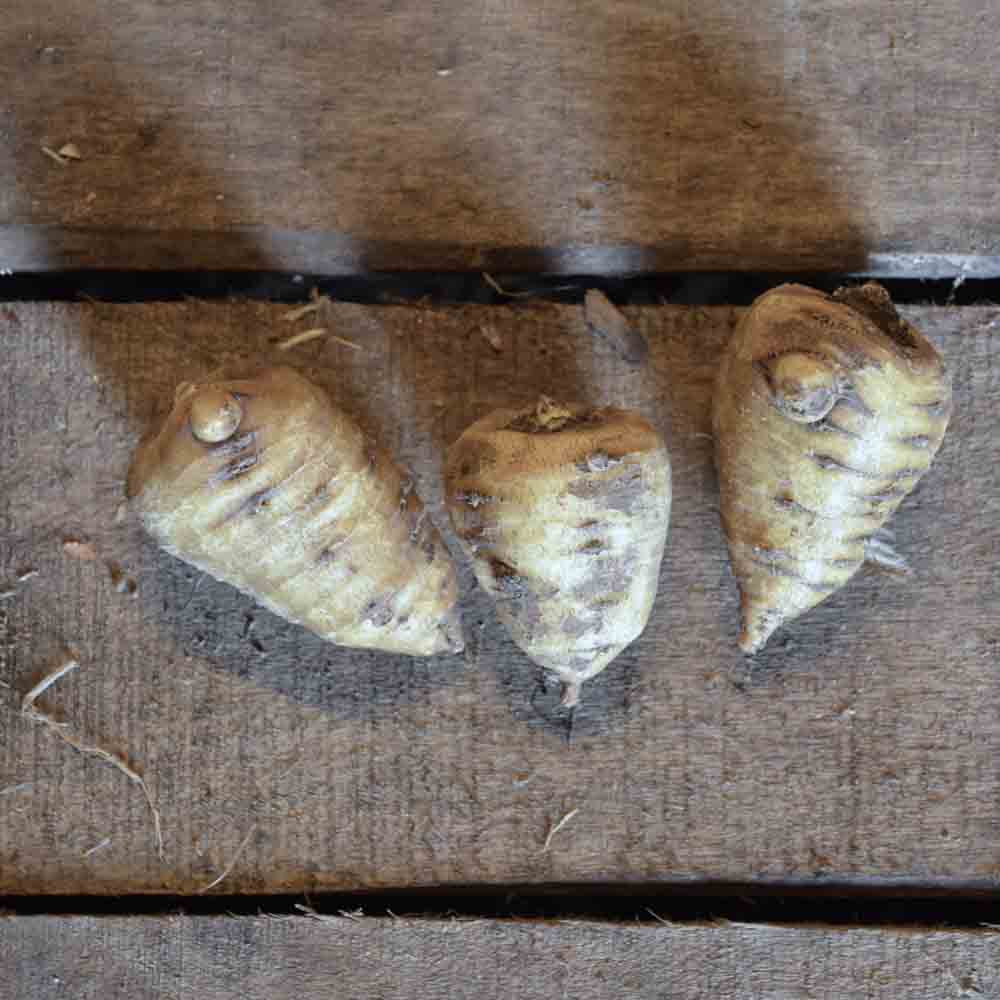TUBEROUS CHERVIL AB
Chaerophyllum bulbosum
Root chervil is an ancient and forgotten root vegetable resembling a small conical carrot. Root chervil has an excellent, sweet, and melting flesh after cooking, somewhere between the taste of potato and chestnut. It can be eaten raw, grated, or cooked, mashed, pan-fried, in a pot-au-feu, in a cream, or as a side dish. Root chervil pairs well with red meat, pork, and chicken.
Chervil can be eaten like potatoes, parsnips, or Jerusalem artichokes, but be careful not to overcook it, as its flesh will become floury. Be careful, the leaves of chervil are toxic.
For this short-cycle variety, we bag and sell a batch in the same year. The short use-by date indicated on the bag is therefore always fairly close. It is recommended to sow the seeds within the year of purchasing the bag.
Successful sowing of tuberous chervil
There are two ways to germinate your tuberous chervil, which can be a fickle seedling. Tuberous chervil needs a cold spell to break its dormancy and germinate.
-
1st method : sowing in November/December for emergence in spring
Sowing: Lightly, in November-December in healthy, well-prepared soil (aerate your plot with a broadfork 4 weeks before sowing), in rows spaced approximately 25 cm apart every 2 cm. Do not bury the seeds; place them on a bed of seed compost and firm down. Seeds will germinate in the spring following sowing.
Thin out, leaving 8 to 10 cm between rows. Regular humus additions will be added throughout the growing season. This will consist of grass clippings, dead leaves, manure, and straw.
Frequent watering.
Harvest : June/July, when the yellow leaves spread out.
-
2nd method : sowing in February/March after stratifying the seeds
Stratify your seeds beforehand: mix your seeds with moist sand then place this mixture in an airtight container and in the bottom of your refrigerator for 3 weeks. Check the humidity of the sand once a week. Sow your seeds in healthy, well-prepared soil (aerate your plot with a broadfork 4 weeks before sowing), in rows spaced about 25 cm apart every 2 cm. Do not bury the seeds, place them on a bed of seed compost and firm down.
Thin out, leaving 8 to 10 cm between rows. Regular humus additions will be added throughout the growing season. This will consist of grass clippings, dead leaves, manure, and straw.
Frequent watering.
Harvest : June/July, when the yellow leaves spread out.
Preserving tuberous chervil
You can store your tuberous chervil in the cellar in a dry place, in sand for 2 to 3 months. Preserving it will enhance the flavor.









